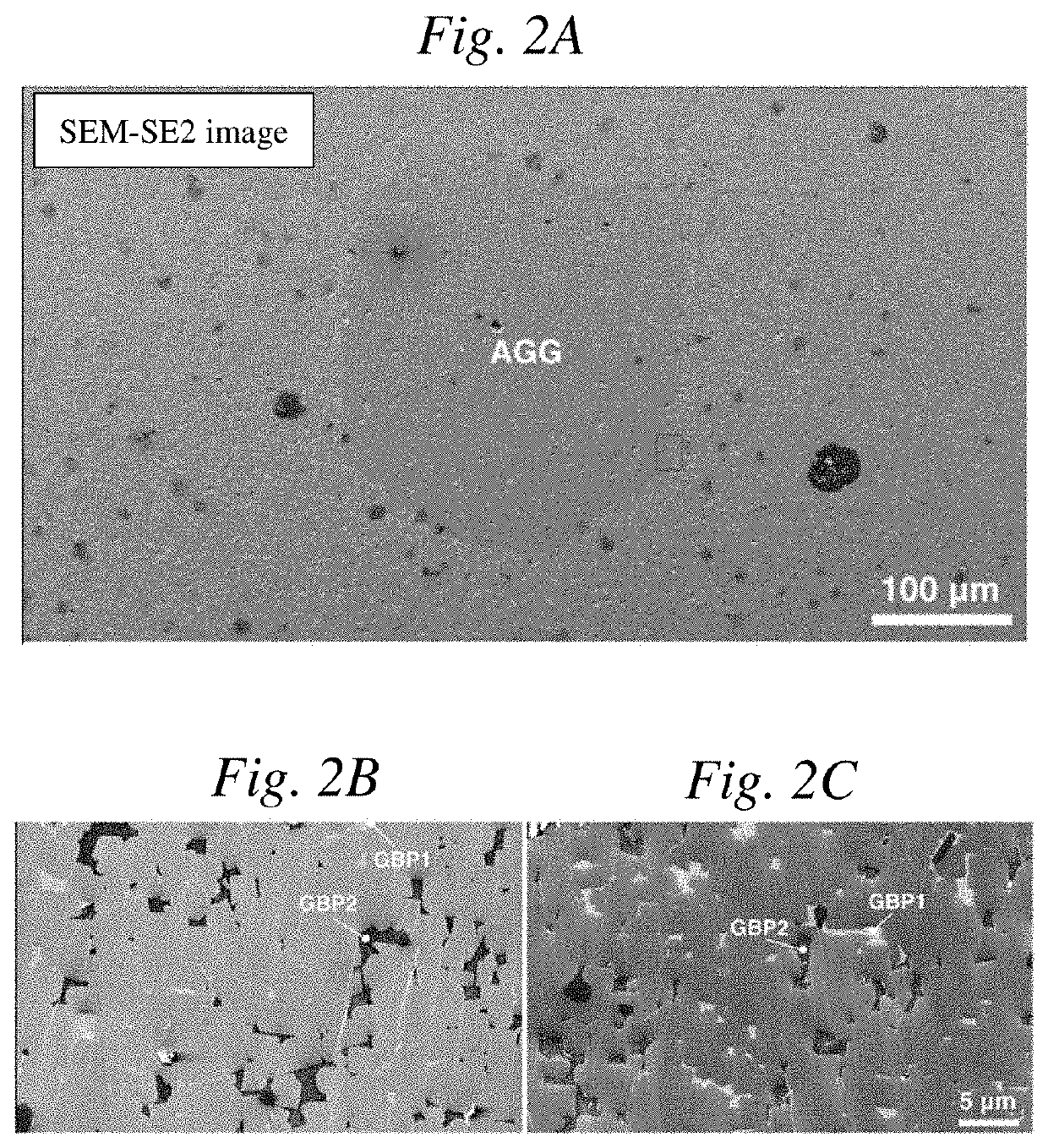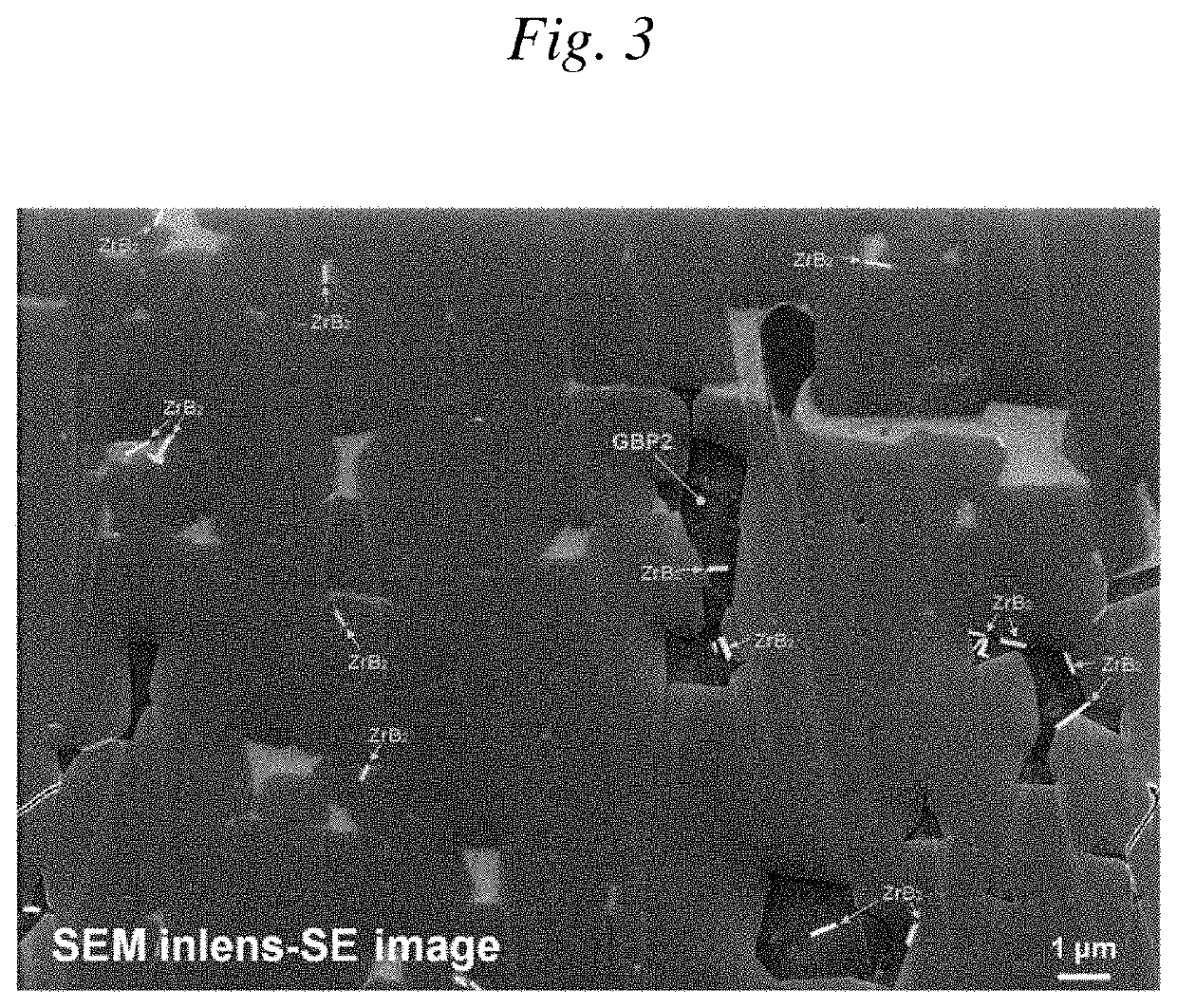R-t-b-based sintered magnet
a sintered magnet and r-t-b technology, applied in the field of r-t-b-based sintered magnets, can solve the problems of difficult to use the effect of suppressing abnormal grain growth due to a rare earth-type phenomenon, and achieve the effect of suppressing abnormal grain growth
- Summary
- Abstract
- Description
- Claims
- Application Information
AI Technical Summary
Benefits of technology
Problems solved by technology
Method used
Image
Examples
examples
[0097]Examples of the present invention are shown below. The present invention is not limited by these Examples.
[0098][1] Structure of R-T-B-based Sintered Magnet
[0099]First, a state of the structure of the R-T-B-based sintered magnet was examined by a microscopic observation.
[0100](Test Method)
[0101]Raw material powder having a composition of Nd26.90Pr4.7Co0.9B0.99Al0.2Cu0.1ZrxFebal. (mass %; x=0.1) was produced and then molded and sintered by a PLP method as a sample according to Example. A filling density was 3.4 g / mm3, and after filling, a magnetic field was applied and grains were oriented in c-axis. Sintering was performed in vacuum at 975° C. for 8 hours. After the sintering, an aging treatment was performed in two stages: at 800° C. for 30 minutes; and at 520° C. for 90 minutes.
[0102]Further, a sample according to Comparative Example which did not contain Zr, that is, x=0 in the above-described composition of the raw material powder was prepared. Then, molding and sintering ...
PUM
| Property | Measurement | Unit |
|---|---|---|
| Fraction | aaaaa | aaaaa |
| Fraction | aaaaa | aaaaa |
| Fraction | aaaaa | aaaaa |
Abstract
Description
Claims
Application Information
 Login to View More
Login to View More - R&D
- Intellectual Property
- Life Sciences
- Materials
- Tech Scout
- Unparalleled Data Quality
- Higher Quality Content
- 60% Fewer Hallucinations
Browse by: Latest US Patents, China's latest patents, Technical Efficacy Thesaurus, Application Domain, Technology Topic, Popular Technical Reports.
© 2025 PatSnap. All rights reserved.Legal|Privacy policy|Modern Slavery Act Transparency Statement|Sitemap|About US| Contact US: help@patsnap.com



